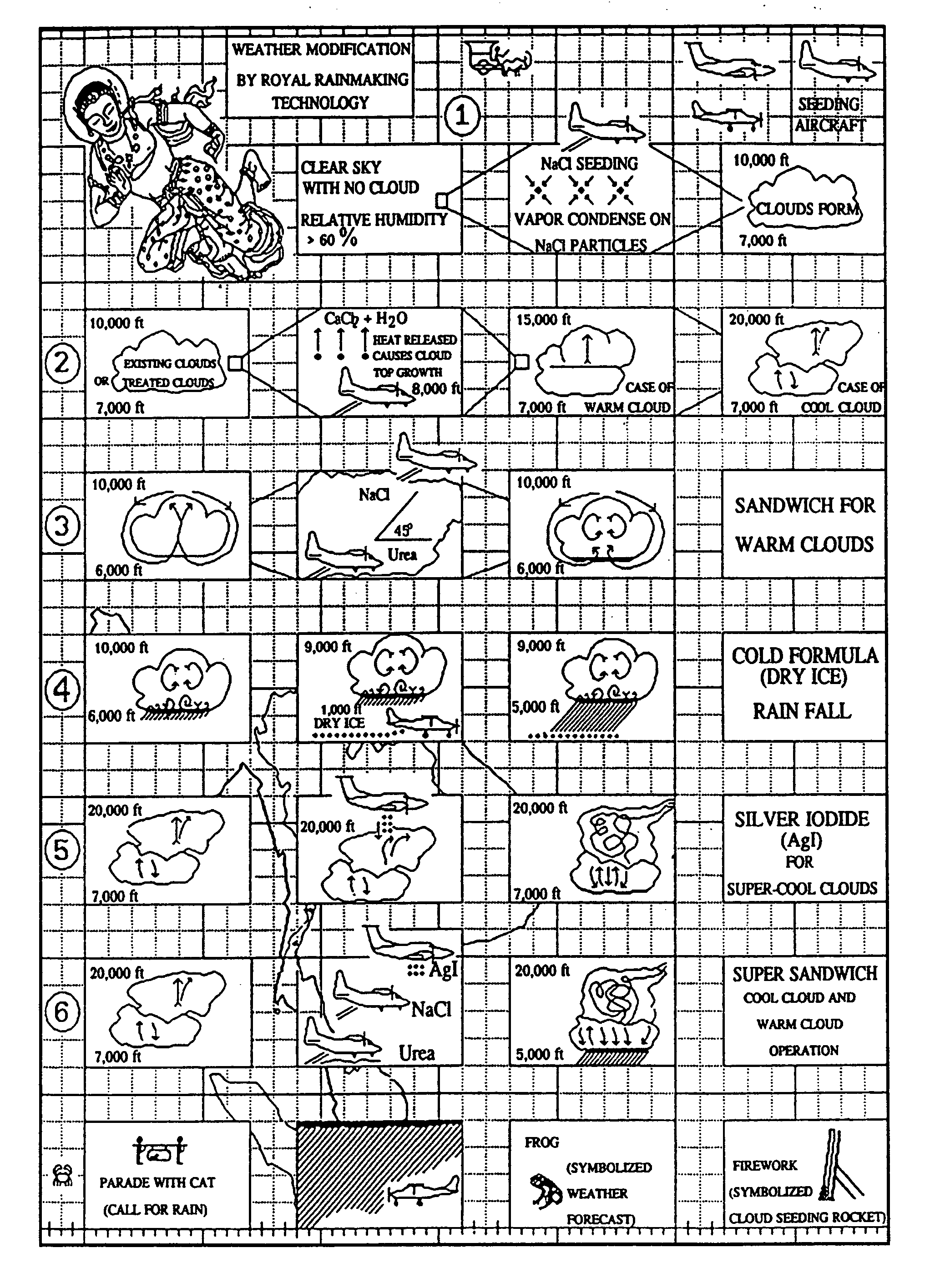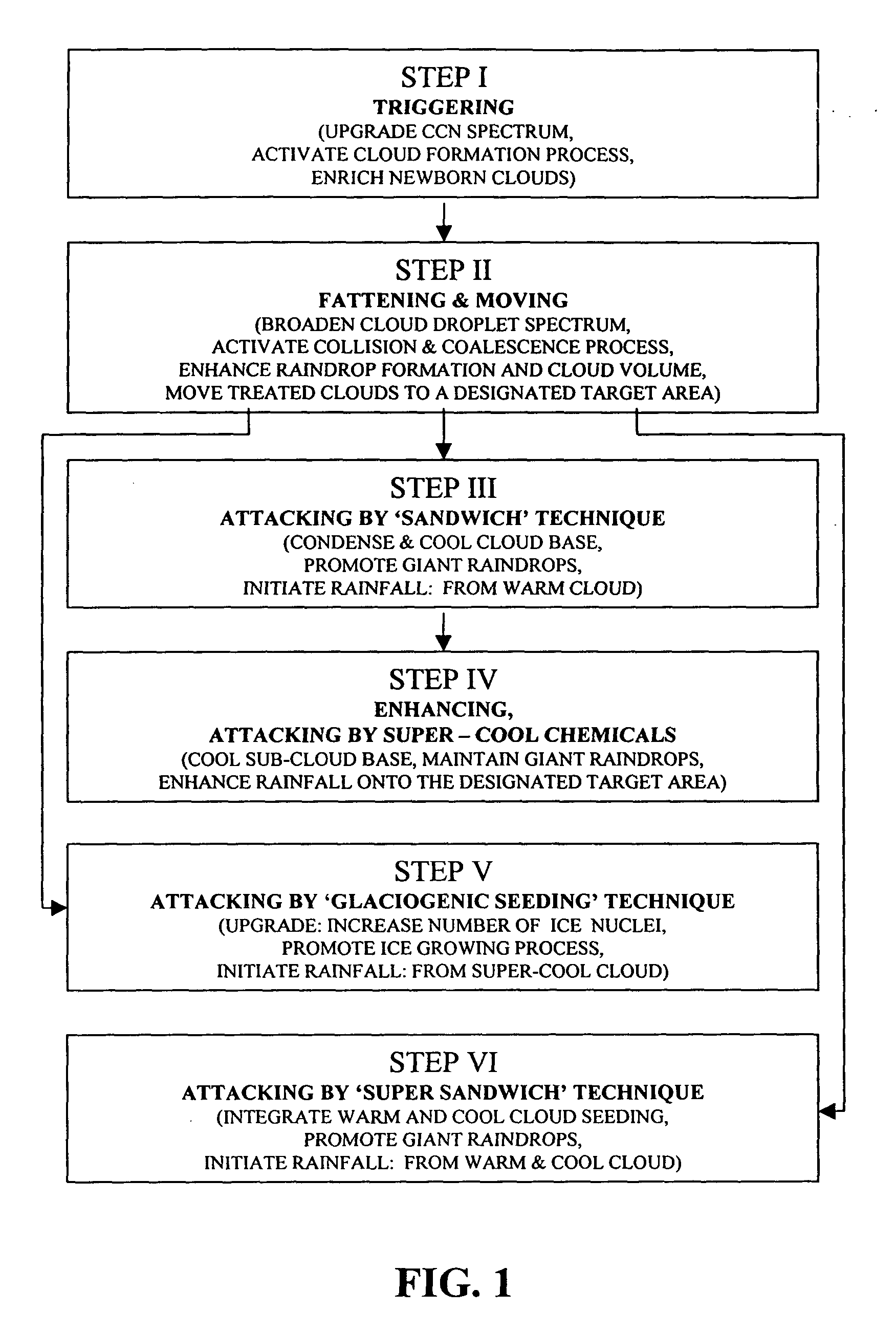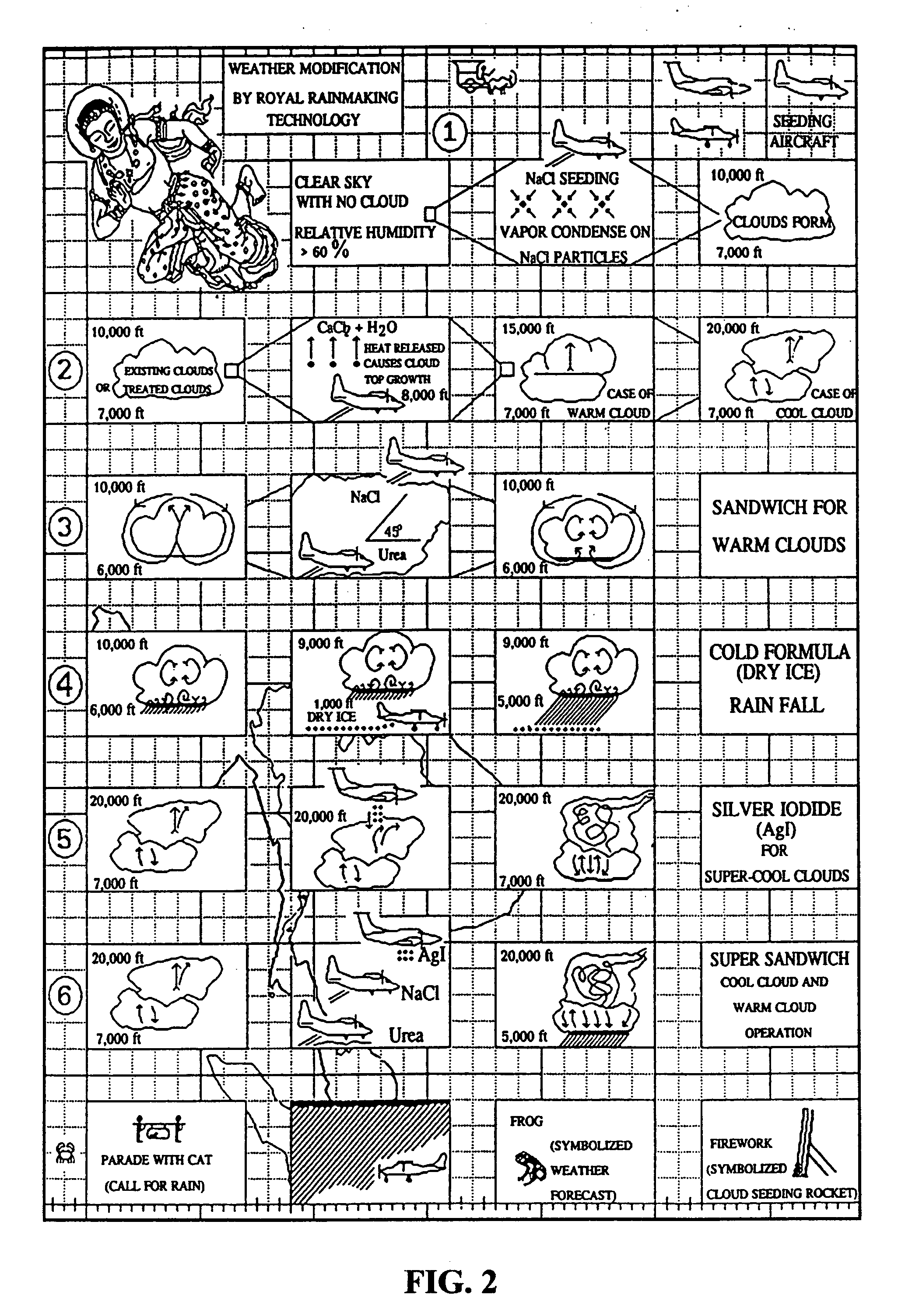Weather modification by royal rainmaking technology
- Summary
- Abstract
- Description
- Claims
- Application Information
AI Technical Summary
Benefits of technology
Problems solved by technology
Method used
Image
Examples
case 1
[0044] Moving cloud from a plain area to a neighboring designated target area downwind.
[0045] This is done by dispersing exothermic-hygroscopic chemicals, such as calcium chloride from a dense cloud mass formed by “Fattening” located upwind to a target area at a level not less than 1,000 feet above said cloud base, where dispersion may be drawn as a linear or a coil shape within a cloud mass depending on the circumstances and to the spaces between cloud masses. This causes lifting up and the cloud mass starts moving along the wind to a target locality, then the “Sandwich Technique” (as of Step III) is applied, while simultaneously super-cool chemical such as dry ice is dispersed at a level about 1,000 feet below the cloud base to enhance rainfall.
case 2
[0046] Moving a cloud mass stuck to the windward side of a mountain to pass over and fall as rain in the area downwind located on the other side of the mountain.
[0047] This is done by dispersing exothermic-hygroscopic chemicals, such as calcium chloride at a level not less than 1,000 feet above said cloud base. This causes lifting up of the treated cloud and the cloud mass starts moving along the wind passing over the mountain top to a target locality on the other side of the mountain which is a rain-shadow area, then the “Sandwich Technique” (as of Step III) is applied, while simultaneously super-cool chemical such as dry ice is dispersed at a level about 1,000 feet below the cloud base to cause rainfall. This is one of the most useful technique. The designated target area is quite dry despite there are plenty of water in the area upwind on the opposite side of a mountain as the mountain itself is the main obstacle to stop moving of cloud to the area in need of water. By using thi...
case 3
[0048] Causing rainfall to expand against direction of wind onto a designated target area from a dense cloud resting on the windward side of a mountain.
[0049] In an area in need of water, cloud forms but is blown away yet is stuck to the windward side of a mountain. To retain such cloud and cause it to fall back as rain onto the locality is possible by fattening cluster of small clouds in the designated target area upwind to the dense cloud mass to cause merging of growing small cloud masses into the dense cloud mass and attacking the growing small cloud masses using ‘Sandwich Technique’ (as of Step III) to initiate rainfall in the locality and thus cause drawing the dense cloud mass to expand back and fall as rain against direction of the wind onto the designated target area.
[0050] Omitting this step of ‘Moving”, rain can be induced to fall in situ at a place where the cloud is built up by step of ‘Attacking’ either by the ‘Sandwich Technique’ or ‘Glaciogenic Seeding’ or ‘Super S...
PUM
 Login to View More
Login to View More Abstract
Description
Claims
Application Information
 Login to View More
Login to View More - R&D
- Intellectual Property
- Life Sciences
- Materials
- Tech Scout
- Unparalleled Data Quality
- Higher Quality Content
- 60% Fewer Hallucinations
Browse by: Latest US Patents, China's latest patents, Technical Efficacy Thesaurus, Application Domain, Technology Topic, Popular Technical Reports.
© 2025 PatSnap. All rights reserved.Legal|Privacy policy|Modern Slavery Act Transparency Statement|Sitemap|About US| Contact US: help@patsnap.com



